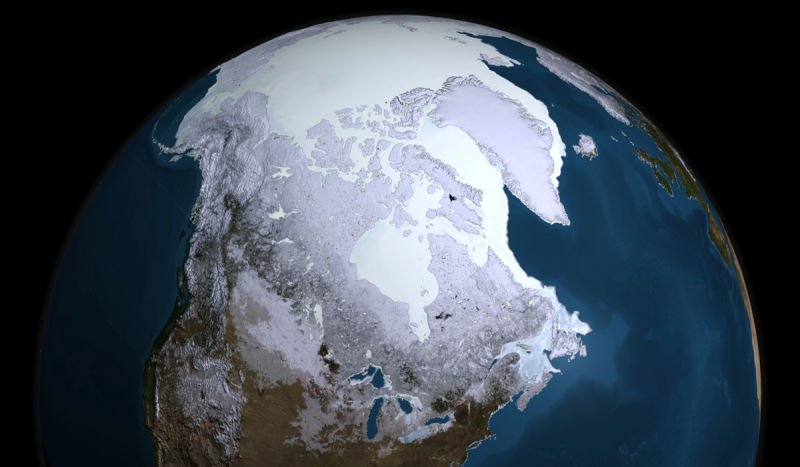Coincidences Decide When Ice Ages Begin And End – Scientists Say
Don Wood – MessageToEagle.com – It seems our knowledge of Ice Ages is still rather limited. It’s very difficult to determine when an Ice Age begins and ends, but there are some clues we should look for.
About 1 million years ago our planet experienced an Ice Age every 40,000 years when vast ice sheets covered North America, Europe, and Asia. Suddenly the Ice Age intervals changed from every 40,000 years to every 100,000 years. Many have wondered why we have an Ice Age every 100,000 years and a previous study answered this question.

Now a new analysis of the so-called climate spectrum shows why the ice ages have not behaved precisely as the models predict.
When we predict future climate, it is important to understand the climate of the past. Our knowledge of ancient climate change is comprehensive, but there are still some missing details that are crucial to future studies.
In the 1920s, Serbian astronomer Milutin Milankovic developed a theory describing the periodicities of Ice Ages.
The theory describes mathematically how incoming radiation from the sun varies over time because the orbit of the Earth around the sun is elliptical and our dear planet wobbles like a top.
All in all these small differences lead to continuous changes in the amount of light and heat that reaches the poles in a 40,000 year cycle and thus forces the climate in and out of ice ages and interglacials.
Why Are Ice Ages So Hard To Predict?
The theory is good, but it doesn’t explain everything. The periodicity of ice ages has not been as precise as the theory would indicate. Why is that? Is it because of noise in the system – that is coincidences, that overshadow the general mechanism, or are the inconsistencies due to problems with the model? The question has long been debated.
Now climate scientist from the TiPES project, Peter Ditlevsen from Physics of Ice, Climate and Earth at the Niels Bohr Institute, University of Copenhagen and colleagues Takahito Mitsui from the University of Tokyo and Michel Crucifix from UCLouvan in Belgium argue that coincidences play a large part.
In their paper, “Crossover and peaks in the Pleistocene climate spectrum; understanding from simple ice age models,” published in the journal Climate Dynamics, they document that the climate system is more chaotic than the model indicates.
A myriad of coincidences seem to displace the ice ages from the predictions of the theory.
The Influence Of Coincidence
In other words — the theory is good, but a large amount of noise can partly overrule the effect of the astronomical variations.
It is an analysis of the so-called climate spectrum that has led to this conclusion. The climate spectrum is calculated from observed fluctuations in climate of the past.
See also:
Do Collisions Between Tropical Islands And Continents Trigger An Ice Age?
World’s Deepest Canyon On Land Discovered Under Antarctica’s Ice
Ancient France Was Once An Exotic Rainforest And Had Amazon-Like Jungles
Seychelles Islands Are Sinking And Will Soon Disappear Underwater
It shows how a range of different processes influence the climate – rising and falling amounts of CO2, rising and falling amounts of energy from the sun, rising and falling amounts of geological activity and so on.
Some of these changes come and go in short time spans others fluctuate over longer periods. That is, some have a high frequency, others a lower frequency. Together they explain the variation, the climate has endured over millions of years.
In the new analysis the climate spectrum is compared to expectations from different models of ice age variations. The analysis shows that the climate indeed is the result of a range of such underlying periodic processes but also of a large amount of background noise which is not periodic. That means coincidences play a large role in changes of the climate.
Tipping Points Might Also Be Harder To Predict
“With this result we can better understand, how ice ages come and go. But we also see, that the climate system can react abruptly and unpredictably to external influences like our current emmissions of carbon dioxide.
That means it might be hard to calculate if — or when we reach a tipping point in the climate system. And we should maybe apply a more conservative risk assesment then the one IPCC recommends,” says Peter Ditlevsen in a press statement.
If a tipping point is reached the Earth system will change irreversibly into another state.
Written by Don Wood – MessageToEagle.com Staff










